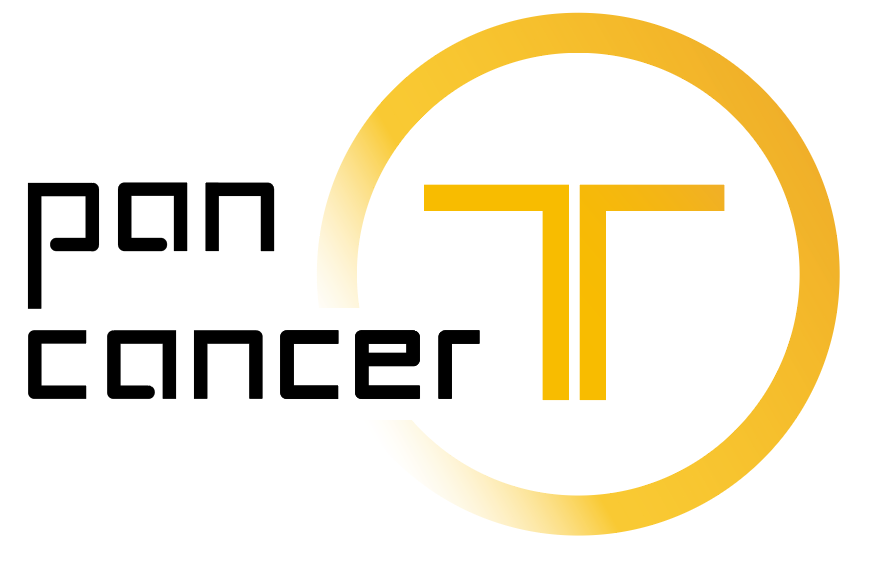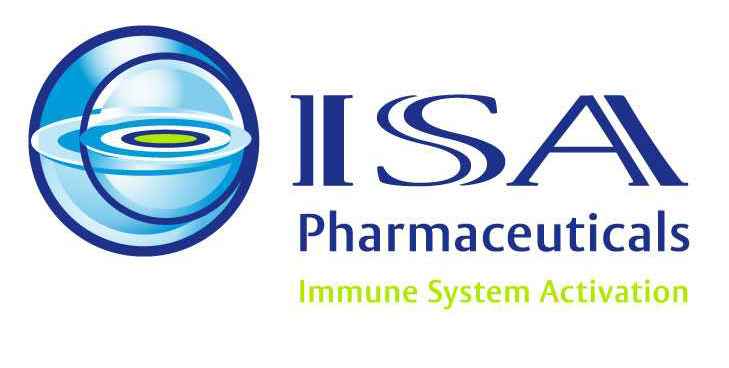Tag: T cells
Pan Cancer T appoints Rachel Abbott to succeed Katrien Reynders-Frederix as Chief Executive Officer

Pan Cancer T B.V., a biotech spin-off from Erasmus MC dedicated to the discovery and development of next-generation TCR-T therapies against solid tumors, today announces the appointment of Dr. Rachel Abbott as Chief Executive Officer (CEO). Rachel steps up from her current role as Pan Cancer T’s Chief Scientific Officer (CSO), succeeding Katrien Reynders-Frederix who has served as CEO since the company’s inception.
Company News: Publication in Nature Supports ISA Pharmaceuticals´ Synthetic Long Peptide Immunotherapeutic Approach to Treat Cancer

– Synthetic Long Peptide (SLP®) immunotherapy achieves targeted tumor eradication comparable to checkpoint-blocking immunotherapy
– New findings on antigens relevant for checkpoint blocking pave the way for personalized cancer vaccines
ISA Pharmaceuticals B.V., a clinical-stage immunotherapy company focusing on rationally designed immunotherapeutics against cancer and persistent viral infections, today announced that a recent scientific paper in Nature supports the company´s therapeutic approach to using synthetic long peptides in cancer therapy. It could be shown that personalized SLP® immunotherapy is as capable of inducing efficient tumor eradication as are T cell checkpoint inhibitors such as anti-PD-1 and anti-CTLA-4 monoclonal antibodies. The research was conducted by a consortium led by Prof. Robert D. Schreiber from Washington University St. Louis. Prof. Cornelis Melief, Willem-Jan Krebber, and Gwenn E. Mulder from ISA Pharmaceuticals also participated in the project.
It is well known that checkpoint immune regulators on the surface of T cells act as deactivators. While they are useful in preventing T cells from attacking healthy tissues, in cancer they prevent the T cells from destroying tumor cells. Checkpoint blockers, such as anti-PD-1 and anti-CTLA-4 monoclonal antibodies, that target these proteins are very effective in restoring the T cell’s ability to eradicate tumor cells. In the Nature publication, Matthew M. Gubin and co-workers – among them three ISA researchers – report about their identification of the antigens recognized by these tumor-infiltrating T cells once their activity has been restored. The researchers used a mouse model of carcinogen-induced cancer, which – like human lung cancer from smokers – bears many mutations (e.g. caused by tar).
The researchers demonstrated that the T cells previously blocked by checkpoint immune regulators were directed against two mutant antigens on the cancer cell surface. These T cells had already infiltrated the tumor prior to checkpoint blocking, but were subsequently deactivated by the tumor microenvironment. Moreover, the team showed that an immunotherapy consisting of two synthetic long peptides, each incorporating one of the mutant amino acid sequence admixed with the adjuvant poly I:C, was able to eradicate the tumor as effectively as checkpoint immunotherapy.
Personalized synthetic long peptides against tumor-unique mutant sequences are a promising treatment approach for cancers with many mutations, such as smoking-induced lung cancer and UV-induced skin cancer. Compared to checkpoint blocking, personalized immunotherapy is likely to achieve anti-tumor effects with less toxicity because they do not activate T cells that are able to attack healthy tissue.
Company News: Micromet Initiates Global Phase 2 Trial of Blinatumomab in Adult Patients with Relapsed/Refractory Acute Lymphoblastic Leukemia
Micromet, Inc. (NASDAQ: MITI) today announced that it has initiated a phase 2 trial of its lead product candidate blinatumomab (MT103) in adult patients with relapsed or refractory (r/r) B-precursor acute lymphoblastic leukemia (ALL). Blinatumomab is the first of a new class of agents called BiTE® antibodies, designed to harness the body’s T cells to kill cancer cells.
This phase 2, single-arm study will evaluate the efficacy and safety of blinatumomab in approximately 65 patients with relapsed/refractory Philadelphia-negative B-precursor ALL. Patients will receive blinatumomab daily for 28 days followed by two weeks off blinatumomab over a six week treatment cycle. Patients who achieve a complete remission (CR) or complete response without full recovery of platelets (CRh*) within two cycles of treatment will receive up to three additional cycles of consolidation treatment. The primary endpoint of the study is CR/CRh*. Secondary endpoints include duration of response and overall survival. The study will be conducted at approximately 40 leading cancer centers in the U.S. and EU. The Company currently expects to complete enrollment in this trial by year end 2012.
Additional information regarding this Phase 2 study is available at the U.S. government’s clinical trials database at http://www.clinicaltrials.gov.
Blinatumomab Clinical Experience in Adult R/R ALL
Interim results from a Phase 2 trial presented at the 2011 Meeting of the European Hematology Association show that blinatumomab produced a high CR rate in adult patients with ALL who had relapsed following treatment with standard therapy. 75% of patients (9 of 12) achieved a CR or CRh* following treatment with blinatumomab1. All nine responding patients achieved a complete molecular response, or had no evidence of leukemic cells in their bone marrow, a key prognostic factor for patient survival. Notably, four patients with genetic abnormalities typically associated with poorer outcomes all achieved a CR or CRh*. The most common clinical adverse events were fever, peripheral edema and fatigue. Treatment of two of the twelve patients was interrupted due to fully reversible and manageable central nervous system (CNS) events.
Food for Thought: Weekly Wrap-Up
In Frankfurter Allgemeine Zeitung (FAZ) Martina Lenzen-Schulte this week reports about an oncology symposion in Wiesbaden/Germany that dealt with oncology patients increasingly turning towards alternative medicines – 40 to 70% according to recent estimates. Oncologists now start to notice they cannot ignore patents’ needs and hopes, and therefore a number of clinicians have turned to looking at available studies on complementary medicine to separate the wheat from the chaff. However, it turns out that many of these studies – on mistletoe therapy as well as on dietary recommendations – are insufficient to provide sound evidence.
Werner Bartens in Sueddeutsche Zeitung features a 3,700 patients study published in the Journal of the American Medical Association demonstrating that contrary to common wisdom low salt diets increase the risk of heart attacks and stroke.
In Wirtschaftswoche, Susanne Kutter introduces the Diapat diagnostic test developed by German biotech company Mosaiques DiaPat GmbH that analyses more than 6,000 different peptide and protein molecules in human urine in one run. The test can be used to diagnose and even predict the onset of diseases. It has just been approved by FDA for the diagnosis of renal diseases. Already, the company markets a prostate cancer urine test in Germany. Mosaique’s test, Kutter claims, is but one of the many achievements to come from proteomics. She adds that the tests will have the potential to save the healthcare system billions of Euros.
Haydn Shaughnessy in Forbes states the record of cancer treatment still looks poor, with cancer mortality not improving a lot – as for example compared to heart diseases. Likewise, many preventive measures such as exercise and low fat diets don’t work. Shaughnessy therefore makes the case to support crowdsourcing approaches to develop a cancer cure like Pink Army and Cancer Commons (see akampioneer’s earlier entry on Open Source Principles – a Concept for the Life Sciences?). Also in Forbes, Matthew Herper forecasts that Pfizer will break itself up and spin out companies soon.
Eric Pfanner in New York Times looks at new European ventures to fill a void in world news after so many news organizations are laying off journalists or closing shop. As examples, he introduces Worldcrunch, a web-based start-up translating newspaper articles from around the world into English and Presseurop which translates into other languages, too.
In the New Scientist Jessica Hamzelou writes that people easily distracted might have more grey matter in their brains than focused people. In a separate article, she also features a pacemaker-like, implantable device that can deliver timed doses of medications for a year. Boonsri Dickinson, also in New Scientist, interviews nobelist Eizabeth Blackburn, the co-discoverer of the telomerase enzyme and its role in aging. Blackburn co-founded biotech company Telome Health, which is now starting to sell a test for telomere length. While at present it is sold for research purposes, e.g. to know more about telomer length as markers of aging, the test will be offered to the public through physicians for $200 later this year. Ferris Jabr in New Scientist introduces an approach fastening nanocapsules filled with interleukins to T cells as a way to cure cancer. So far, it seems to work in mice.
And here our favorite quote from Matthew Herper’s blog, who recently mused about whether entrepreneurs share some genetic characteristics, and if so, whether one could invent an antibody to turn someone into an entrepreneur: “‘Entrepreneur Antibody:’ Serious Side Effects Might Include Visual Hallucinations of Venture Capital.”
And finally, Norbert Lossau in Die Welt features a study by LinkedIn into the most common given names of CEOs, finding that in Germany they are Wolfgang, Christoph and Michael. In France, Gilles is number one, while it is Charles in the UK, Ray in Canada, Guido in Italy and Howard in the US. Marketing people often have short names like Chip, Todd or Trey, while engineers seem to have much longer give names. So think twice before naming your next newborn!
